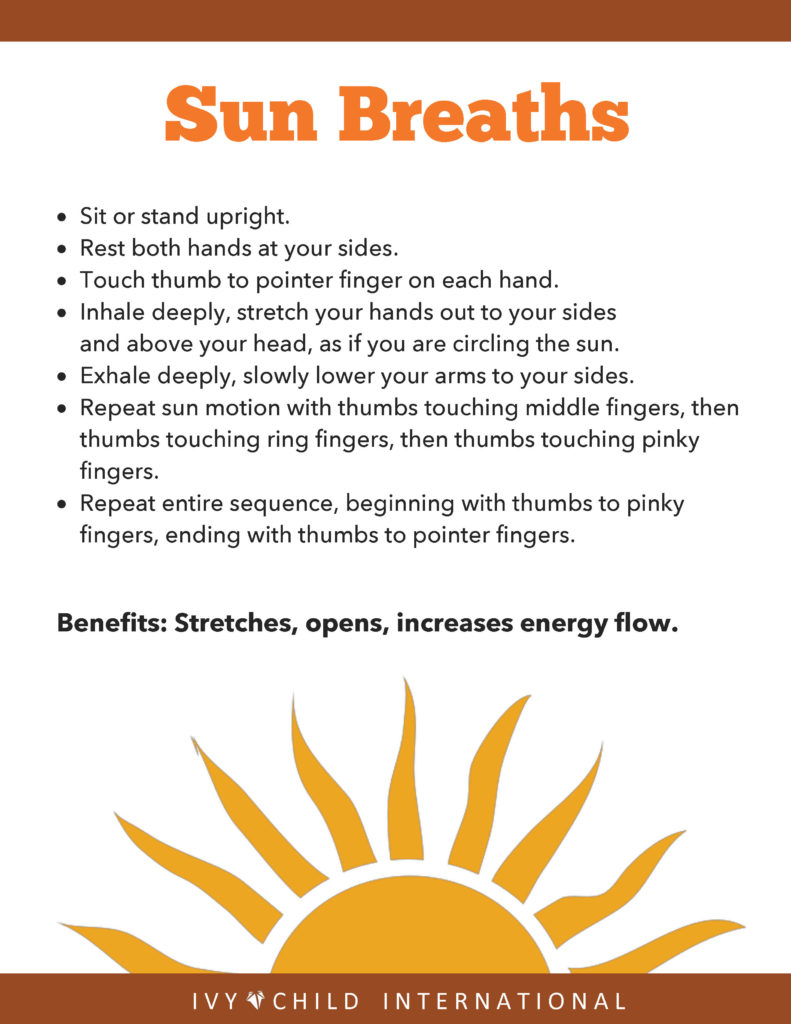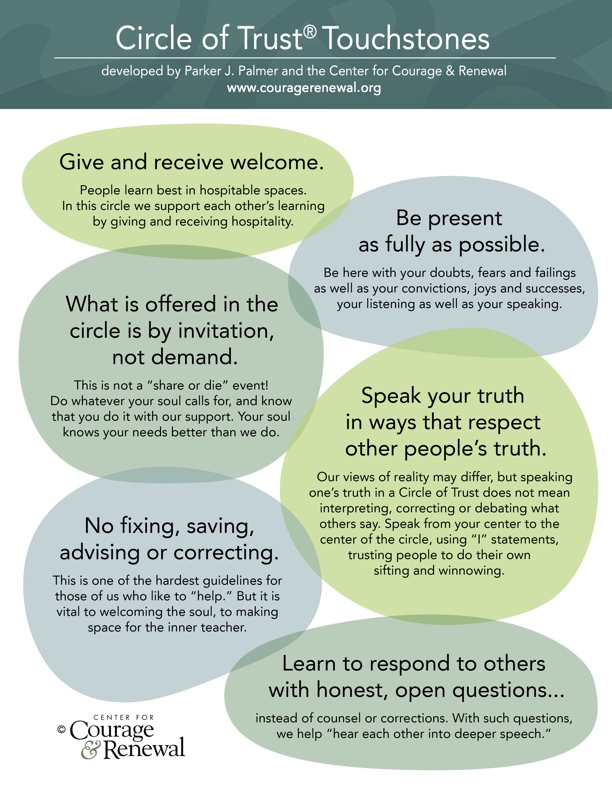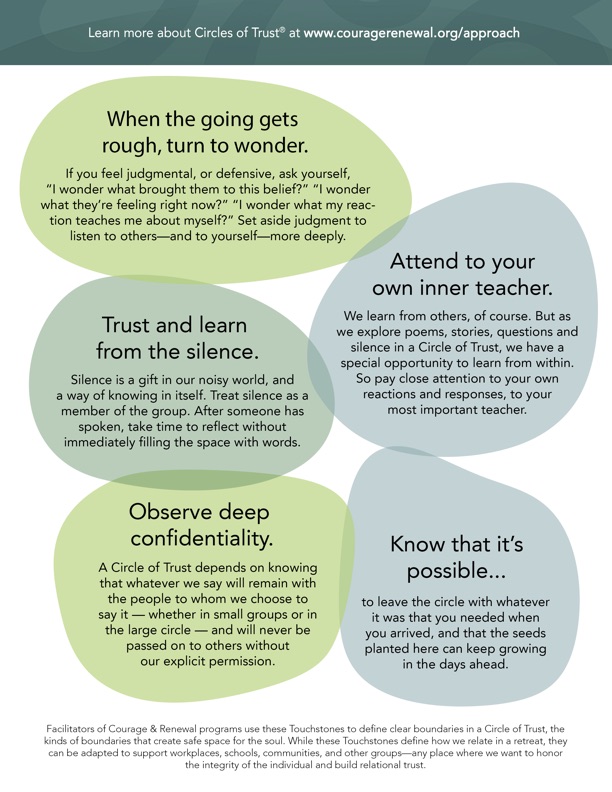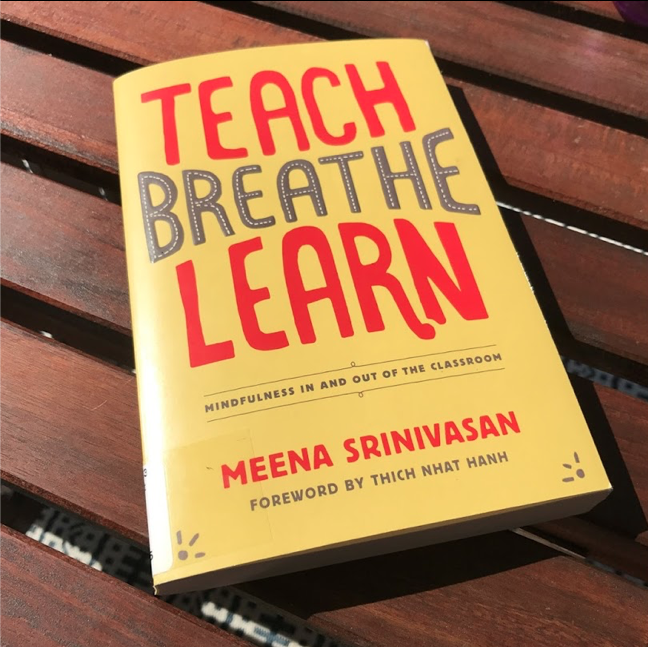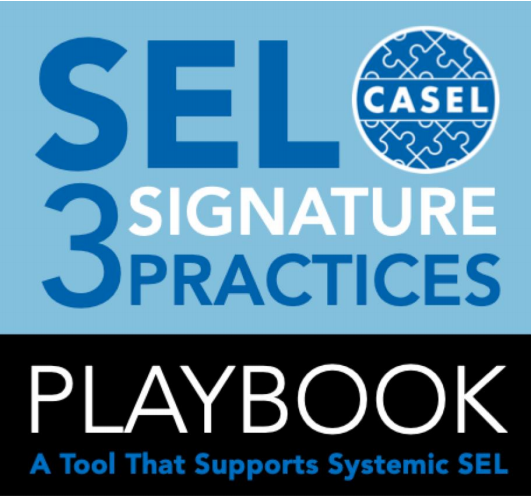Sun Breaths is a dynamic warm-up sequence that focuses on the flow of arms with the breath. The breathing pattern (inhalation-hold-exhalation-hold) guides the movement of the arms that acts as a tool to bring more awareness to the body and breath.
Circle of Trust Touchstones for Safe & Trustworthy Spaces
Tree of Contemplative Practices
On the Tree of Contemplative Practices, the roots symbolize the two intentions that are the foundation of all contemplative practices. The roots of the tree encompass and transcend differences in the religious traditions from which many of the practices originated, and allow room for the inclusion of new practices that are being created in secular contexts.
The branches represent different groupings of practices. For example, Stillness Practices focus on quieting the mind and body in order to develop calmness and focus. Generative Practices may come in many different forms but share the common intent of generating thoughts and feelings, such as thoughts of devotion and compassion, rather than calming and quieting the mind. (Please note that such classifications are not definitive, and many practices could be included in more than one category.)
Access the PDF version here.
Mindful Practice Group
Starting a Mindful Practice Group by Meena Srinivasan
A GREAT WAY to support your practice is to start a mindful practice group at your school. You could meet once a week either before or after school, or if that’s too much, start with meeting once or twice a month. Perhaps you can use your classroom or talk with an administrator about using a common space to meet. Even though this space should be confidential so all participants feel safe express- ing themselves, I suggest forming various practice groups to suit people’s needs. For example, there could be a group for the entire school community or one just for teachers or just for parents. I had an experience where some of my teaching colleagues felt that if there were administrators or parents in the group, they would not feel comfortable or safe that the group would honor how they truly felt. So it’s important to create safe spaces in which individuals feel they can express themselves without being afraid of being criticized later.
Access the full PDF version here.
Written by Meena Srinivasan.
Welcoming/Inclusion Activities
Welcoming Inclusion Activities are brief, interactive experiences that bring the
voice of every participant into the room, making a connection to one another
and/or to the work ahead, with each perspective-laden, culturally-rich voice being
heard, respected and learned from. The more we fully share ourselves and are fully
received and understood by others, the stronger and safer our learning
environments become. Growing knowledge of and appreciation for our groups help
ensure that we will provide opportunities to welcome people in the ways they need
and want to be included.
Psychologist Barbara Fiese explains that routines are a way of communicating “this
is what needs to be done,” while rituals symbolically communicate the idea that
“this is who we are” as a group, providing continuity in meaning across time.
Access the full PDF version here.
Letting Go Breath Exercise

NBA (Notice, Breathe, Allow, Action)



